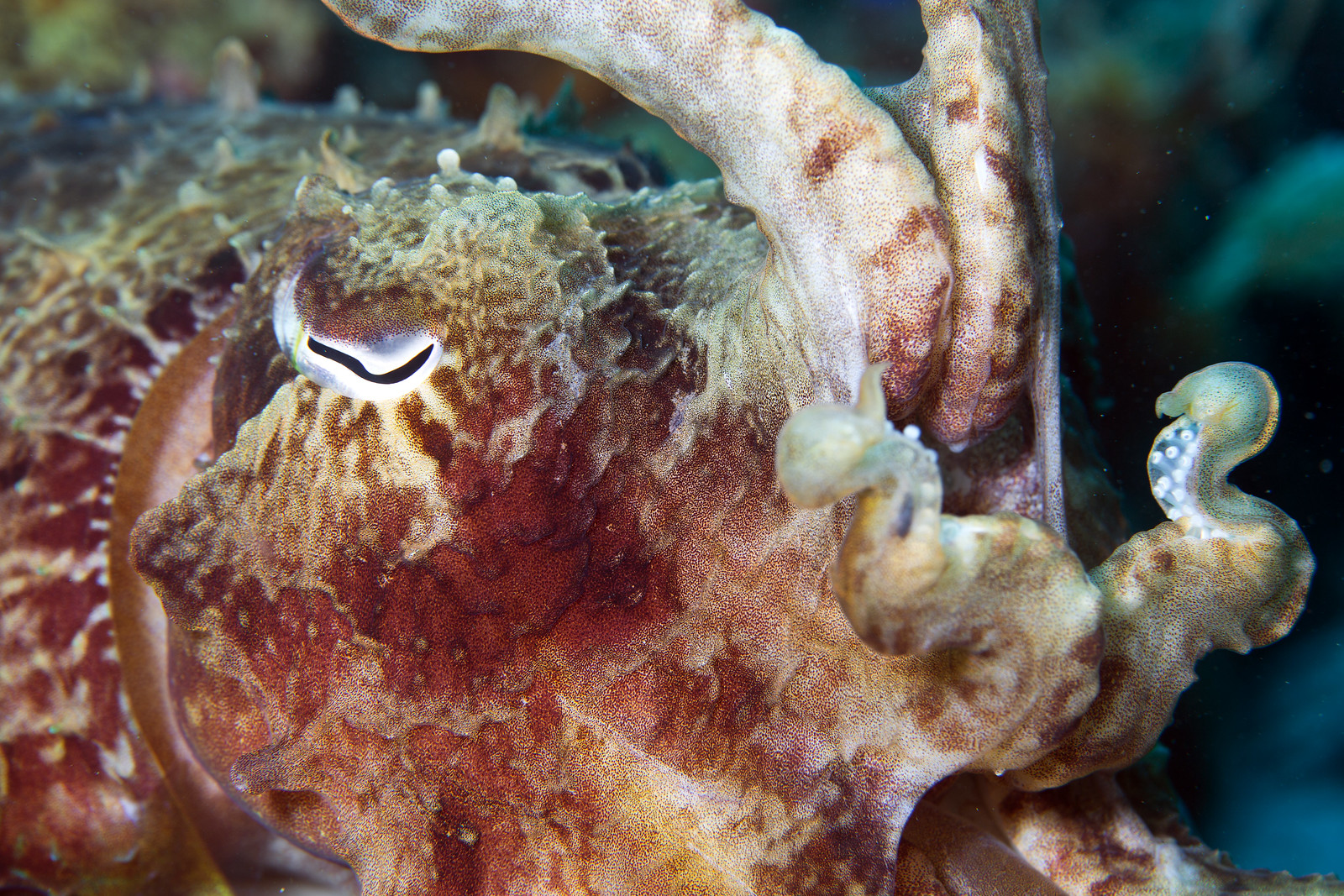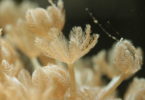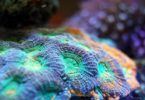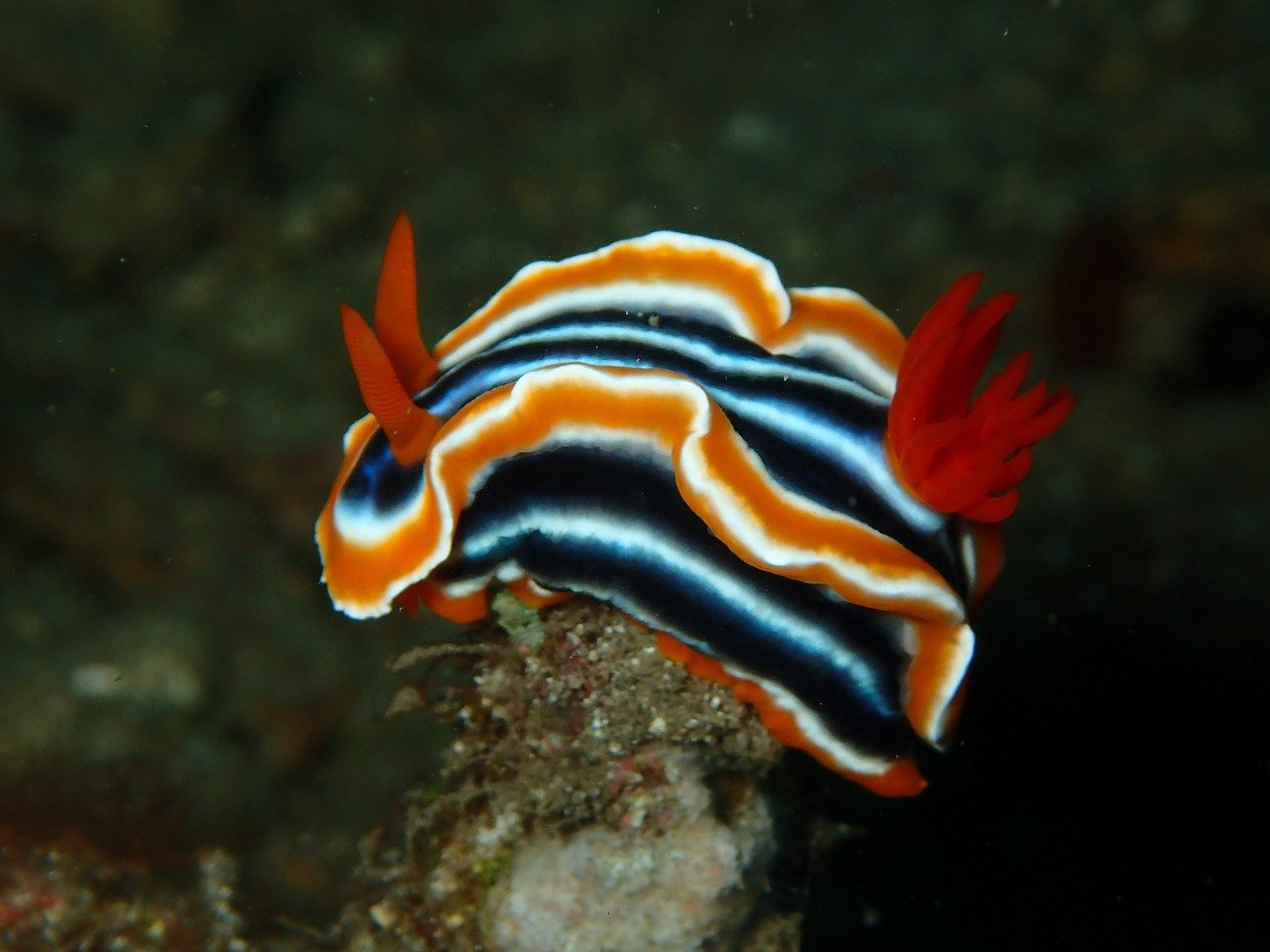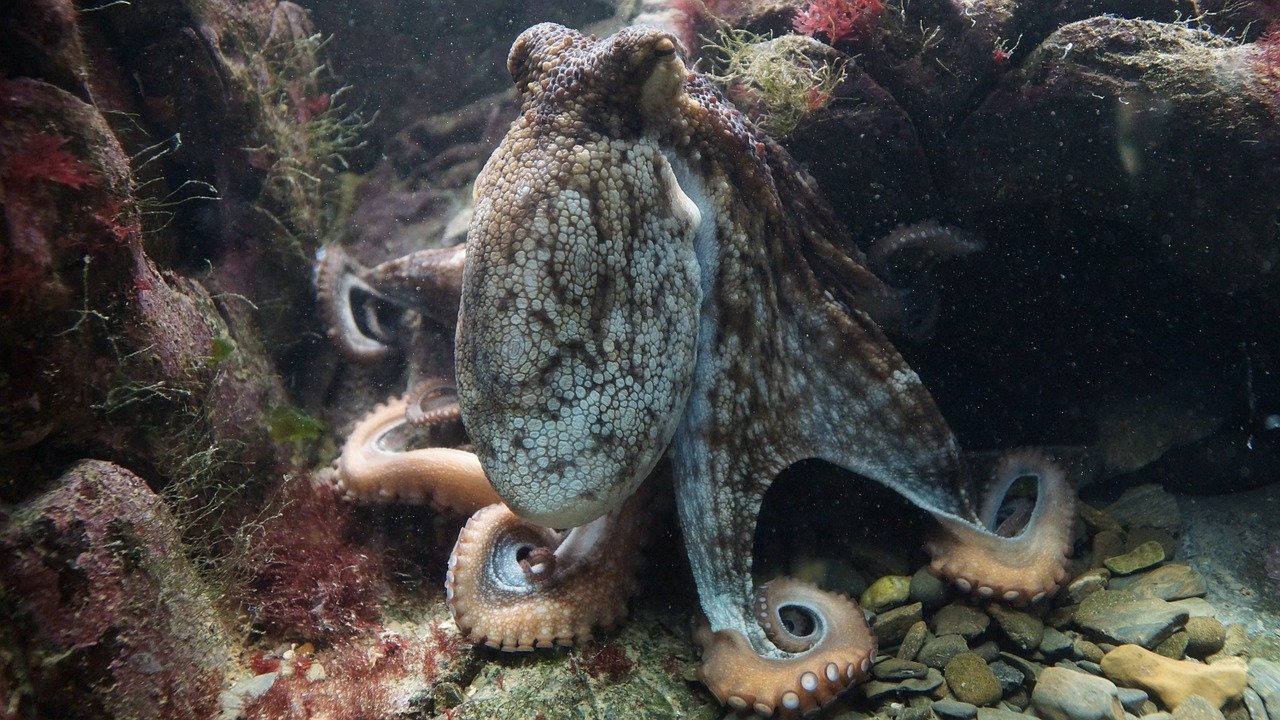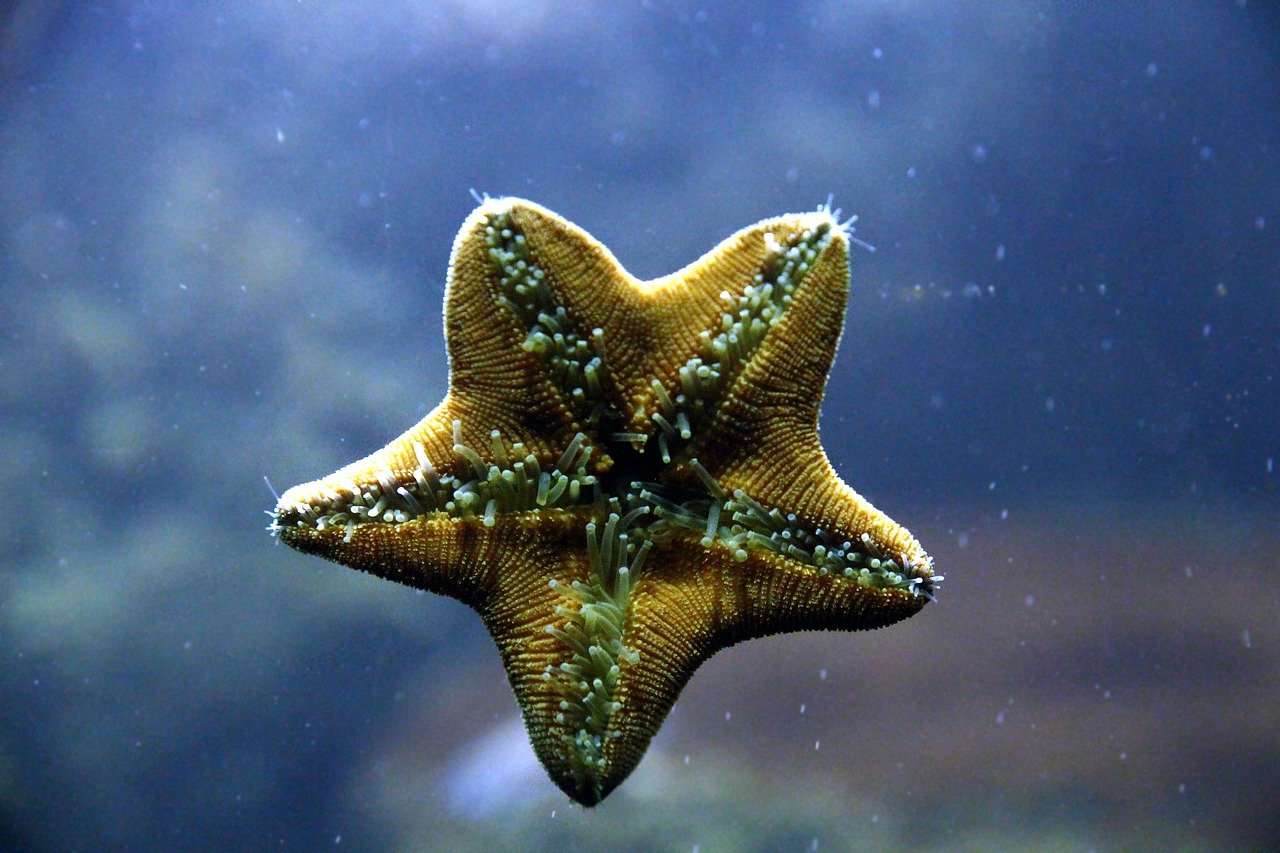Last Updated on February 10, 2023 by Matt
The Broadclub Cuttlefish, Sepia latimanus, is the second largest cuttlefish species, a true giant of the cephalopods.
It is a member of the Cephalopoda class of the mollusks, along with all other cuttlefish and squid, octopus, and Nautilus. They are part of the Sepiida order, and the Sepiidae family.
Broadclub Cuttlefish are popular for human consumption throughout its range, and also has many other uses in fresh and frozen meat. The cuttlebone is often used as a calcium supplement for other pets as well, such as budgies.
In this species profile we will run through this amazing cuttlefish species.
IN THIS ARTICLE
Description
Broadclub Cuttlefish get their name from from the crescent shaped club-like appendage at the end of each feeding tentacle. They have eight short tapered arms in addition to these two longer tentacles. The arms have longitudinal white bands at the edges, and have 2-4 suckers in rows, while the tentacles have 5-6 rows of suckers. Around 4-5 suckers in the club are greatly enlarged.
Arms of a cuttlefish are mainly used for swimming, and the tentacles for feeding and communication. The tentacles have a large nerve which allow each sucker to be controlled individually.
Broadclub Cuttlefish are the second largest cuttlefish species in the world, growing up to 6.69 to 9.45 inches in length, not including tentacles, and weighing as much as 22 lbs (10 kg).
The mantle is an oval shape, and is flattened dorsoventrally, being wider than it is high. Narrow skirt-like fins run from the head to the end of the mantle. These fins have a white band along the edge of the mantle. The cuttlebone is what gives the mantle its distinctive shape, and is porous to help with buoyancy.
Like all cuttlefish, the Broadclub Cuttlefish can change its coloration. This aids in camouflage, and hiding from predators. It also serves a function in communication. However the usual coloration of the mantle is light or dark brown, or yellow. The eyes have a distinctive yellow trim.
Broadclub Cuttlefish are able to display 13 unique body patterns; 7 chronic which can last for hours and 6 acute which last only minutes or seconds. Often they exhibit a mottled coloration, which aids in camouflaging with the reef habitat.
They have a layer of cells called chromatophores, which enable the color changing ability in cephalopods. Under this chromatophore layer are additional layers of iridophores and leucophores. These specialized cells can generate iridescent and reflect light through crystals in the cells. Broadclub cuttlefish can coordinate these cell layers to produce bands of flashing light.
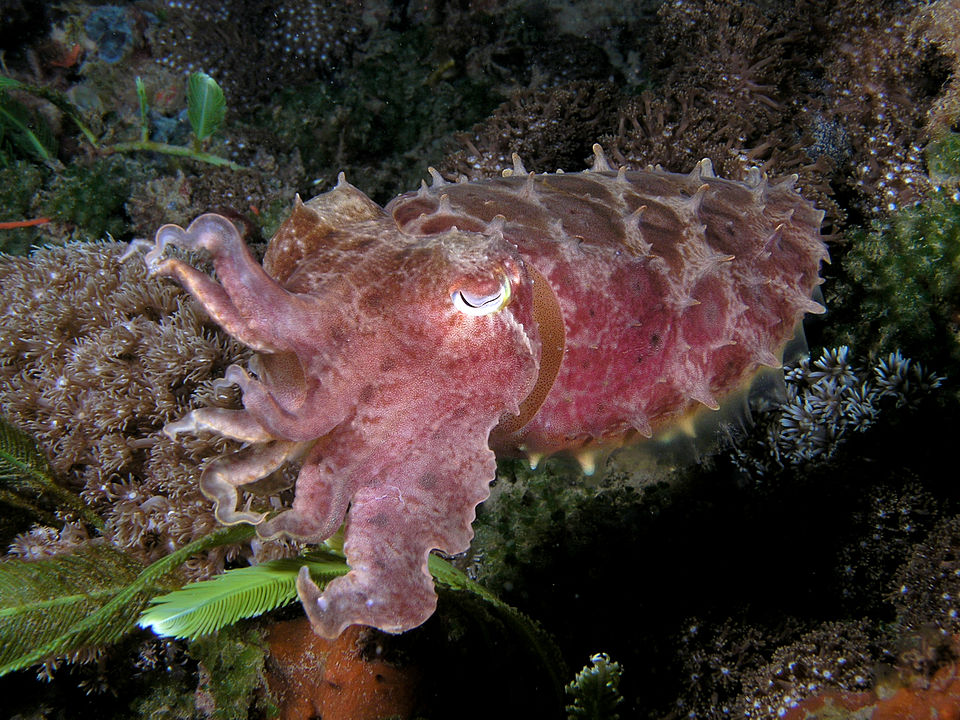
Broadclub cuttlefish exhibiting a dark coloration and with papillae extended. Credit: Nhobgood Nick Hobgood, CC BY-SA 3.0, via Wikimedia Commons
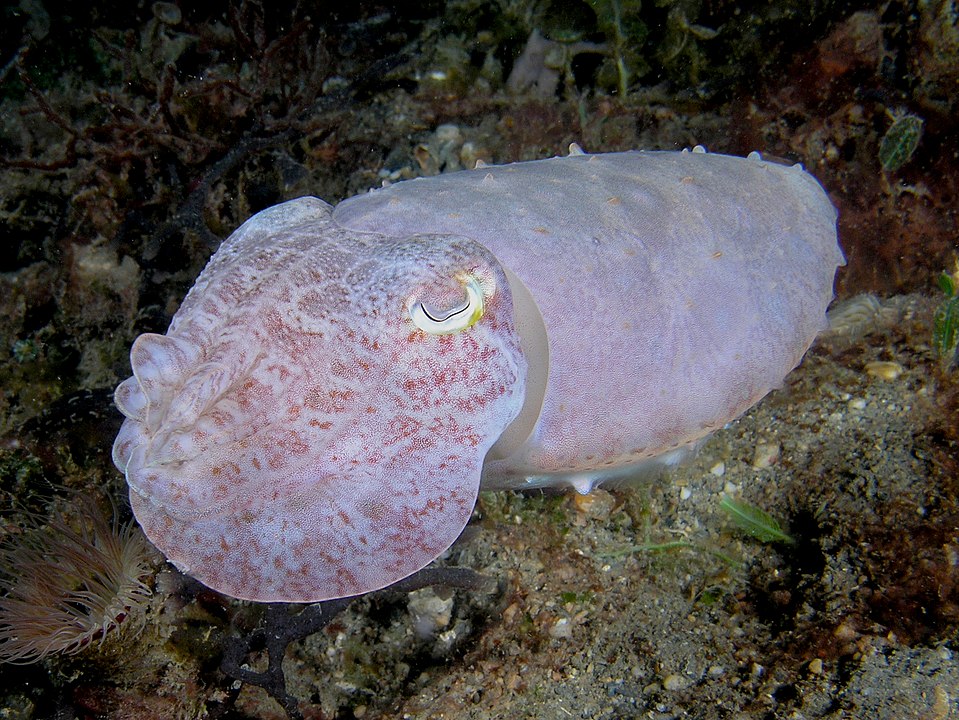
The same Broadclub Cuttlefish exhibiting a white coloration and with papillae retracted only moments later. Credit: Nhobgood Nick Hobgood, CC BY-SA 3.0, via Wikimedia Commons
They also exhibit sexual dimorphism; but this can vary, with the males being larger than the females in Japan, but smaller than females in the Philippines.
Distribution
Sepia latimanus is one of the most common cuttlefish species, being widely distributed throughout the Indo-Pacific region. It inhabits tropical reefs throughout the east coast of Africa and the Red Sea, is widely found in Indian coasts and in east and southeastern Asia, and as far as Japan to Australia and the Coral Sea.
In fact Broadclub Cuttlefish have such a wide distribution that it is thought likely that they are in fact a species complex. A species complex is where many species are so closely related and so similar in appearance they are thought to be the same species.
Behavior and Natural History
Broadclub Cuttlefish are generally slow moving cephalopods, and are bottom dwellers seen floating over a range of habitats from coral reefs, seagrass, to muddy and sandy flats. This species is found to depths of around 30 metres.
Sepia latimanus is normally solitary, only coming together in large aggregations for mating and spawning. However there is some evidence to suggest that groups may form during hunting, to increase success rates. Hunting in groups does hold many advantages, and also negates some of the disadvantages that stem from cuttlefish not looking after their young.
The mating season usually runs from January to May, but this timeframe can vary. Spawning occurs in shallow water, where males claim a suitable territory on a coral head. This territory will be defended, and courtship is highly ritualized, with dramatic flashing visual displays by the male. Once the female has chosen a mate, mating will occur head to head. The male will place a spermatophore on the female’s buccal membrane near the mouth.
Sepia latimanus is polyandrous, and females will have multiple partners. Repetitive mating is common, with females immediately moving on to another male after mating.
Females will lay their eggs on the coral head in the male’s territory, then fertilize them with the stored sperm. The eggs harden after being laid, making it difficult for predators to remove and eat them. The incubation period is around 40 days, and once hatched the young cuttlefish remain in the shallows amongst coral, often mimicking mangrove leaves. Newborns are approximately 14mm in mantle length, and mature when they are around 160mm in mantle length. A Broadclub Cuttlefishes growth is indeterminate, which means that they continue to grow throughout their lives, even during mating and spawning.
Juvenile cuttlefish can change coloration in the same manner as an adult cuttlefish, displaying almost the same range of patterns. This is not common amongst other cephalopods.
As Broadclub Cuttlefish are slow moving, they can’t hunt by speed. Instead they rely on their color changing abilities. If simply trying to camouflage and blend in with the background doesn’t work, many animals have evolved to see through this trickery, then the cuttlefish tries another angle. They coordinate the three layers of specialized cells, chromatophores, iridophores, and leucophores, to create flashing pulses of light and color. This puts prey such as crabs and other crustaceans into a trance-like state, so the cuttlefish can easily grasp it with a quick strike.
Not only is the Broadclub Cuttlefish able to change its coloration at will, it is also able to change its texture. This is enabled via the papillae. Papillae cover the skin, and enable the cuttlefish to look “spiky” or smooth, when tensed or not.
Being able to change both their texture and coloration makes them camouflage experts, enabling them to hunt and be active during the day.
In the Home Aquarium
Unfortunately the Broadclub Cuttlefish isn’t appropriate for the home aquarium. They can often be seen in professional public aquariums, being fairly easy to keep in large tanks, and even breeding successfully regularly.
As they are so large they would need a very large aquarium, and would need their feeding requirements met. Being so large most species that could be housed with them would be on the menu!
Added to this their life span is only two years or so. They don’t live long after mating and spawning. This isn’t a trait which makes a good home aquarium inhabitant.
Feature Image Credit: prilfish (Flickr)

